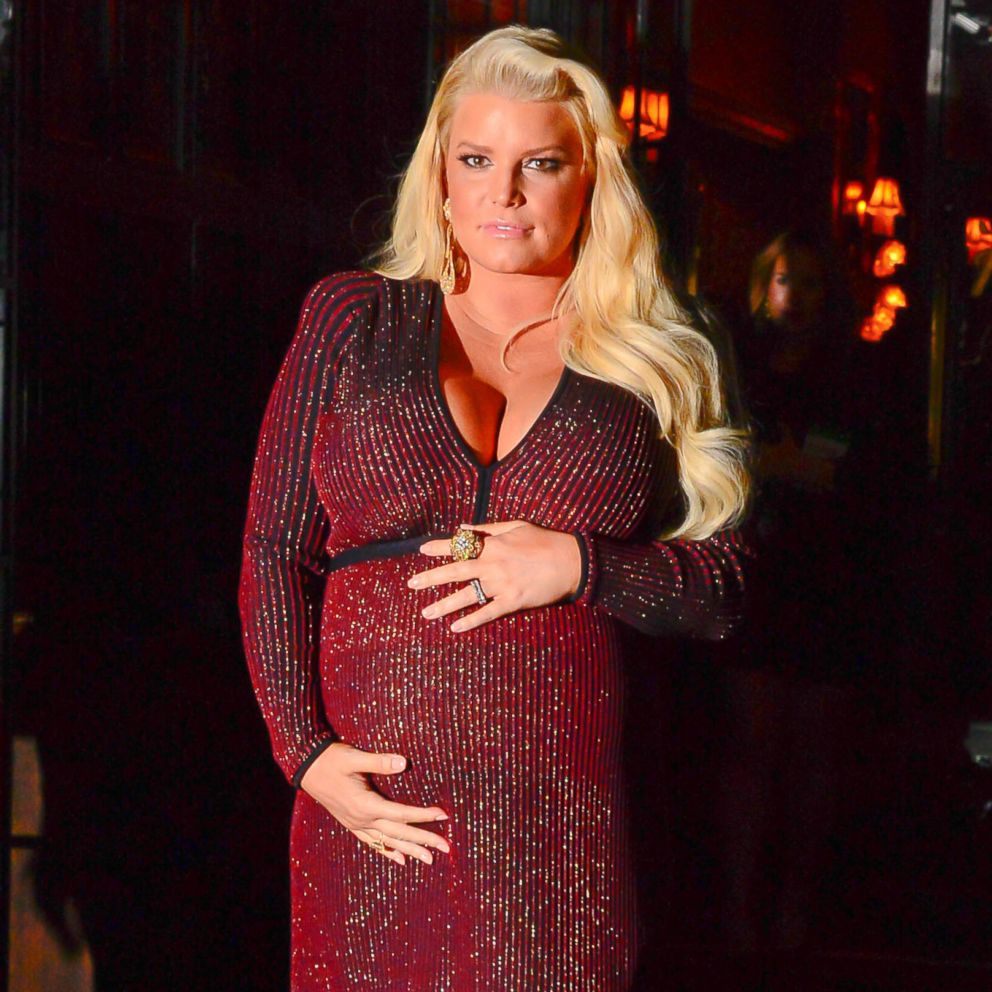Chrissy Teigen gets real on why her post-baby body is her 'new normal'
"The thinnest I've ever been was right after Luna," Teigen tweeted.
Chrissy Teigen is getting candid about body image after baby.
The supermodel and mother of two took to Twitter Sunday to explain why she's happy in the skin she's in, writing, "'How do you eat like this??' - basically I am 20 pounds heavier than I was before miles. he's 10 months old, I never lost the last bit because I just love food too much. Just coming to terms with my new normal, when I had this certain number for so long!"
Teigen also revealed what her body was like after she gave birth to her first child, Luna, whom she shares with singer John Legend in addition to their toddler son, Miles -- and how that related to her wellness.
"The thinnest I've ever been was right after Luna," she added to the Twitter thread. "Postpartum depression. I'LL TAKE THESE POUNDS AND THIS FEELING!"
Fans and followers praised Teigen for spreading body positivity and getting real about PPD -- a condition she's opened up about in the past.
"You are so brave and transparent, I love you so much!" one woman wrote. "Thank you for being you and a PHENOM role model for girls."
"As an ObGyn who sees so many women w/ postpartum depression, your platform to normalize is huge!" a doctor tweeted.
Another follower chimed in, "I've been through severe PPA twice and wouldn't wish that experience on my worst enemy. It was awful but I'm trying to use my experience to raise awareness and reduce the stigma."
About one in nine women experience symptoms postpartum depression, according to the U.S. Centers for Disease Control and Prevention.
A symptom of depression is loss of appetite, and the symptoms of postpartum depression are similar to symptoms for depression, the CDC says.
Teigen, 33, previously opened up about postpartum depression in a 2017 essay she did with Glamour magazine.
"Getting out of bed to get to set on time was painful," Teigen wrote in the article. "My lower back throbbed; my shoulders -- even my wrists -- hurt. I didn’t have an appetite. I would go two days without a bite of food, and you know how big of a deal food is for me. One thing that really got me was just how short I was with people.
"I couldn’t figure out why I was so unhappy," she added. "I blamed it on being tired and possibly growing out of the role: 'Maybe I’m just not a goofy person anymore. Maybe I’m just supposed to be a mom.'"
Teigen has said that in the past couple years, she's really changed her entire lifestyle to be healthier on the inside, just as much as it shows on the outside.
"After Luna, I was drinking too much," she told Women's Health of the months following giving birth to her daughter in 2016. "I wasn't eating as much because I was full from drinking. I wasn't being good to my body."
Dr. Jennifer Ashton, ABC News' chief health and medical correspondent and a board-certified OB/GYN, said weight loss is often associated with PPD.
"Weight loss can often be a sign or symptom of depression, and the link to PPD is not a different one or a new one -- nor should the weight loss that can accompany PPD be seen as a desirable consequence," Ashton told "Good Morning America" on Monday. "But rather, any time we can increase awareness that psychiatric illness can and does have physical manifestations, we have the opportunity to help people."
Teigen said that after taking a wellness retreat and medication for postpartum depression, she knew things had to change holistically.
Later in her interview with Women's Health, Teigen said though her diet has changed, her body goals are also very different now -- a revelation mirroring the tweet she posted Sunday to her 11 million followers.
"Since I was 20 years old, I had this weight in my mind that I am, or that I'm supposed to be," Teigen told the magazine in its October issue. "I've been so used to that number for 10 years now. And then I started realizing it was a swimsuit-model weight. There's a very big difference between wanting to be that kind of fit and wanting to be happy-fit."
For more on reproductive health, symptoms of PPD and resources for treating PPD, visit the CDC's website.






